Ayurvedic Cooking Tips By Gita Ramesh
featured in Indian Express
The Indian Express published a very interesting article on
Ayurvedic Cooking style atKairali Ayurvedic Healing Village, Palakkad and its
benefits on 4th September 2014. The article highlights the history of
Ayurvedic Cooking and how it can heal your body and rejuvenate you and presented
some of the recipes of Gita Ramesh?s The Ayurvedic Cookbook. Gita Ramesh is the
founder and the Joint MD of Kairali
Ayurvedic Group.
The article also says that considered one of the oldest science of
cooking, Ayurveda cooking is basis for not only the evolution of the Indian
cuisine but has hugely influenced that of the world too.
The legend of Ayurveda
cooking and how it can heal your body
Salads, mostly
prepared raw with sprinkling of ginger slivers and lemon juice, first documented
in the Ashoka period was thanks to Ayurveda. (Source: Kairali Ayurveda Healing
Village, Palakkad)
You are what you eat.
For centuries, this has been the basis of most cuisines across the world. But
it was Ayurveda, the 5,000 year-plus-old Indian health science, which first
introduced the art of ?personalised cooking?. In fact, it went a step further
by demonstrating how not only what you eat makes a difference but how it is
prepared also makes a difference.
Based on the
understanding of the unique combination of Vata (Ether), Pitta (Fire) and Kapha
(Water) that constitutes the human body and balances its life forces, the
Ayurvedic cuisine encompasses dishes made with such combination of food that
optimises these elements in the human body. Often considered as the father of
Indian vegetarian cuisine, thanks to its plants and plant produce?s heavy
usage, Ayurveda in its journey to evolve dishes that create the perfect balance
in the body has also introduced most of the cooking styles that are termed
healthy today, like pan frying, roasting, steaming and blanching.
Considered one of the
oldest science of cooking, Ayurveda cooking is basis for not only the evolution
of the Indian cuisine but has hugely influenced that of the world too.
The answer to ?why? some dishes in the Indian culinary repertoire
are fried while others are steamed or even roasted can be found in Ayurveda.
This ancient science actually discovered how cooking and the time taken to cook
can change the composition of a particular food and its effect on the body.
Like the lycopene in tomatoes, which enhances while cooking can be easily
extracted. Likewise for onion. Tempering it with hing balances the diuretic
properties in onion that makes it good for cough and cold and helps in
digestion. In fact, ayurvedic cooking bars from using browned onions that have
lost all their nutrients and can cause acidity in a few cases. Blanching
carrots robs them off their betacarotene, and so best eaten raw. In fact the
all-popular steam cooking done by wrapping vegetable in a leaf is also quintessentially
ayurvedic in nature.
Legend has it that it was this understanding of science that allowed
Draupadi and the five Pandavas survive in jungle. The kheer, a dish that finds
mention both in Mahabharta and Ramayana was in fact an Ayurvedic invention. It
combines the fat in milk with the starch in rice to boost energy.
The art of lactic fermentation and its use was yet another gift of
Ayurveda to the culinary world. The proof of this is the high use of ghee and
yogurt in ayurveda to treat a huge array of illnesses, from constipation to
ulcers and even hangovers. An old scripture found from the Gupta period states
the use of ghee to make a vegetarian spread for Khastriyas before the war. It
is said that after the Kalinga war, Emperor Ashoka gave up meat in favour of vegetarian
food, five times a week, because it kept him agile and alert. Soups, yet
another innovation from ayurvedic kitchen, too were hugely consumed back in
time. In Chola kingdom, it was used both as a morning beverage and for
improving appetite. Soup was often the food given to new lactating mothers to
regain strength.
Salads, mostly prepared raw with sprinkling of ginger slivers and lemon
juice, first documented in the Ashoka period was thanks to Ayurveda. In fact,
this earlier version of ?raw food diet? was adopted by the Buddhist from
Kalinga (present day Odisha and West Bengal) who took it to other countries and
continents while they travelled. Many food historians attribute the tradition
of eating raw food or par boiled food in Chinese cuisine to Ayurveda and to the
Chinese pilgrim Fa Hsien (c. 337?422 AD), who visited India many a time to
document the culinary and health system, notes that Indian cuisine then,
especially the vegetarian side, used minimum spices and cooking time so as to
impart that right flavour to the dish without compromising on the nutrients.
It is this philosophy of cooking that is still followed by those
practicing Ayurveda, and makes it a healing and restorative cuisine. What also
lends ayurvedic cooking its unique identity aside the cooking method used for
each food and the good use of local ingredients, is the use of certain herbs
and practices. Most recipes in Ayurveda call for kasturi (curcuma aromatic), a
fragrant variety of turmeric root instead of ordinary turmeric (curcuma longa) because
of its aroma and nutrients. It also uses a lot of flowers and berries in its
dishes instead of spices like chillies to extract the required flavor without
too much cooking. So assuming that Ayurvedic dishes are all bland is truly a misconception.
A spice and meat jaded palate will find it high on subtlety, but that is because
each dish is made to suit a person?s character, which is a mix of Vatta Pitta
and Kapha.
So how does one incorporate Ayurvedic cooking in one? s lifestyle? As
Gita Ramesh, founder of Kairali Ayurveda Healing Village in Kerala, states in
her book The Ayurvedic Cookbook, ?by first finding what composition you are,
usually people are a combination of Pitta-Kapha and Vatt-Pitta (the first
character being dominant), and then eating according to your individual
character. And following a proper routine, which is a ix of food and exercise.?
Though interestingly, she adds, ?when it
comes to vegetables and fruits, had in moderation everything benefits. And by
moderation, I mean portion sizes that fit into a fist.?
Here are a few recipes to help
you get started:
White Radish Salad
White Radish Salad (Source: Kairali Ayurveda Healing Village, Palakkad)
Ingredients
1 Radish, medium size, grated
1-inch Ginger, thinly sliced
1 Green Chilli, shredded
1 tbsp Coriander leaves, chopped
10 ml lime juice
Mint for garnish
Method:
Squeeze excess water from the radish. Now add the ginger, green chilli,
coriander leaves and lime juice, Give it a good toss and serve with mint.
Tip: The radish juice can be made into a soup, but its best had fresh with
a little lime juice and black salt for a clear stomach. Also, if you do not
want to use chillies, pepper powder (freshly pounded) is a better alternative.
Have a sweet tooth? You can also drizzle a little honey on the top.
Banana Cucumber Salad
Banana Cucumber Salad (Source: Kairali Ayurveda Healing Village,
Palakkad)
Ingredients
2 Bananas, medium size
15 ml Lime juice
15 gm Peanuts, roasted and crushed
15 gm Grated Coconut
2 Cucumbers, medium size
Salt and chillies to taste
Mint for garnish
Method:
Slice the bananas into chips, grate the cucumber. Now in a bowl, add
the bananas, cucumber, coconut and peanuts. Add the lime juice, chillies and
give it a good toss. Adjust seasoning and garnish with int.
Tip: Those allergic to peanuts can substitute it with pinenuts that has the
same nutty flavour. You can also use slightly sweetened yogurt/curd for the
salad instead of lime juice.
Yellow pumpkin Soup
Yellow pumpkin Soup (Source: Kairali Ayurveda Healing Village,
Palakkad)
Ingredients
500 gm Yellow Pumpkin, diced
1 Onion, large
2 Green chillies
1-inch Ginger, sliced thinly
tsp Cumin, roasted
2 Cloves garlic, chopped
A spring of Curry leaves
Salt to taste
Method
Pressure cook all the ingredients except salt for 10 minutes in 2 cups
of water. Once cooled, use a blender to turn the pulp into a smooth paste. Boil
the paste with a little more water, adjust seasoning and served with sliced
curry leaves.
Tip: want more zing in the soup? Toss the curry leaves in a little sesame
oil.
Carrot Toran
A variation of the popular cabbage toran, it can be cooked faster than
most Instant noodles.
Ingredients
400gm Carrot, diced into small squares
1 tsp Mustard seeds
Curry leaves for tempering
30gm Fresh Coconut, grated
2tsp Vegetable Oil
1 Dry red chilli, seeds removed
tsp turmeric
tsp Cumin
Salt to taste
Method
In a pan, heat oil, add the mustard and cumin seeds. Once they began to
splutter, add the chilli and bruised curry leaves and cover to let out the
aroma. Remove the curry leaves and add the carrot and turmeric. Cook till done.
Add the grated coconut, mix well, add the curry leaves and cook for some time.
Remove and serve hot.
Tip: The philosophy of cutting the vegetable uniformly helps vegetable
cook faster. This is the reason that most Ayurvedic dishes have vegetables
chopped alike so as they cook together and fast. The secret of making good
toran is to cook coconut till it become slightly translucent.
Recipe And Picture Courtesy:
Kairali Ayurveda Healing Village, Palakkad
Published on- 4thSeptember2014



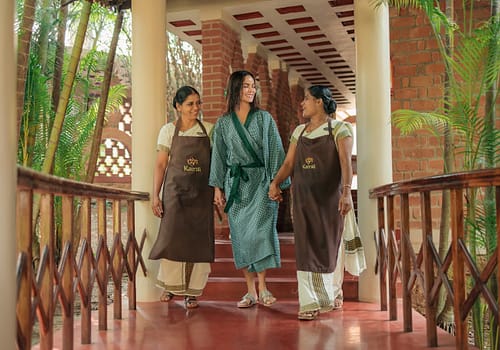
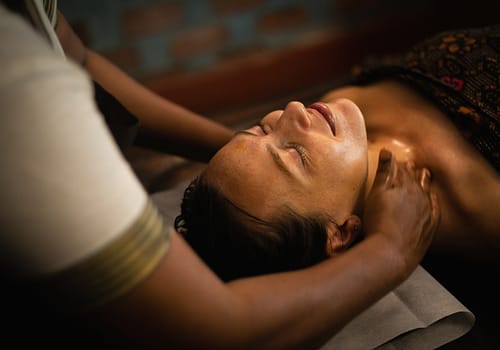

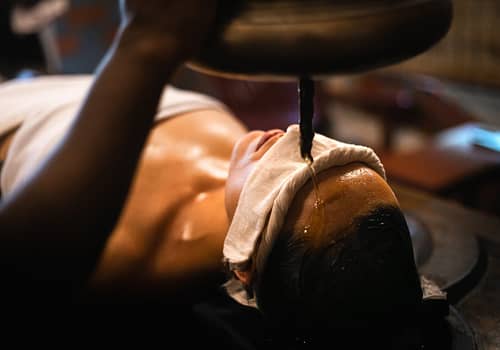
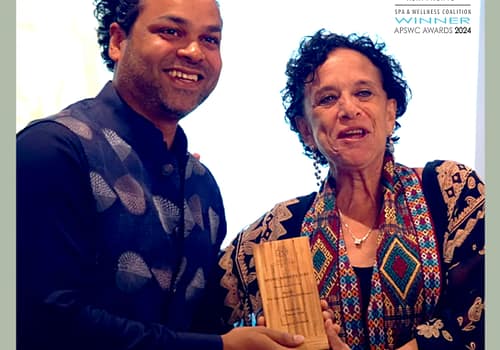







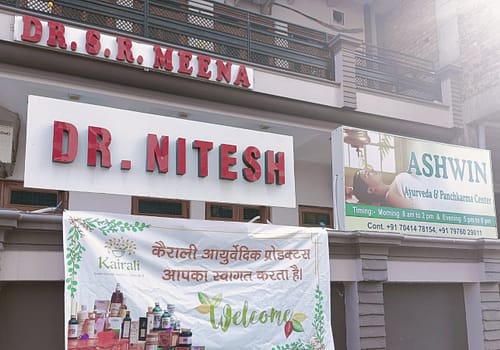






























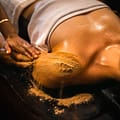


Leave a Reply